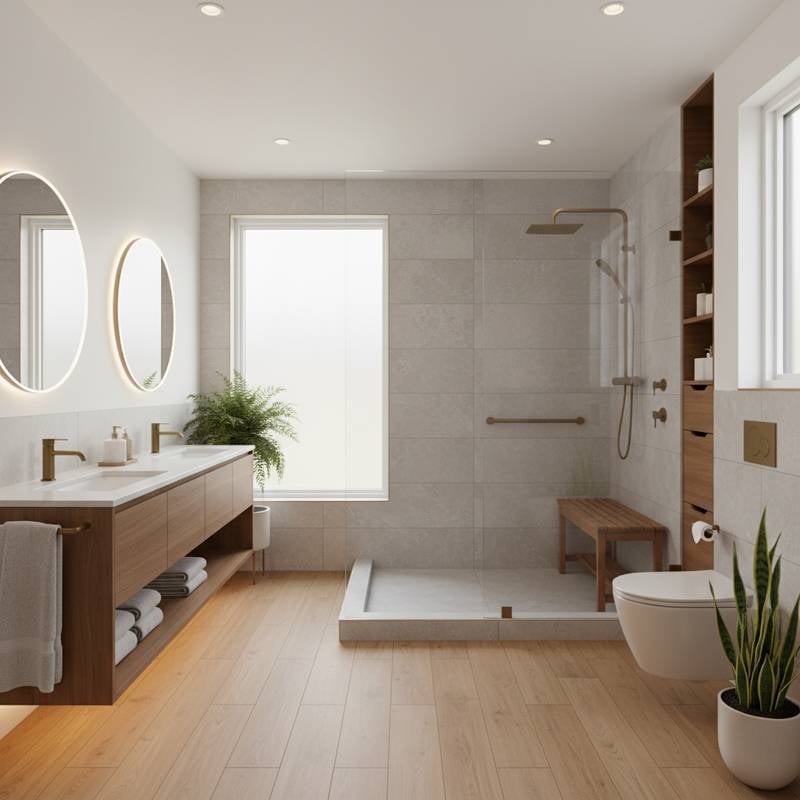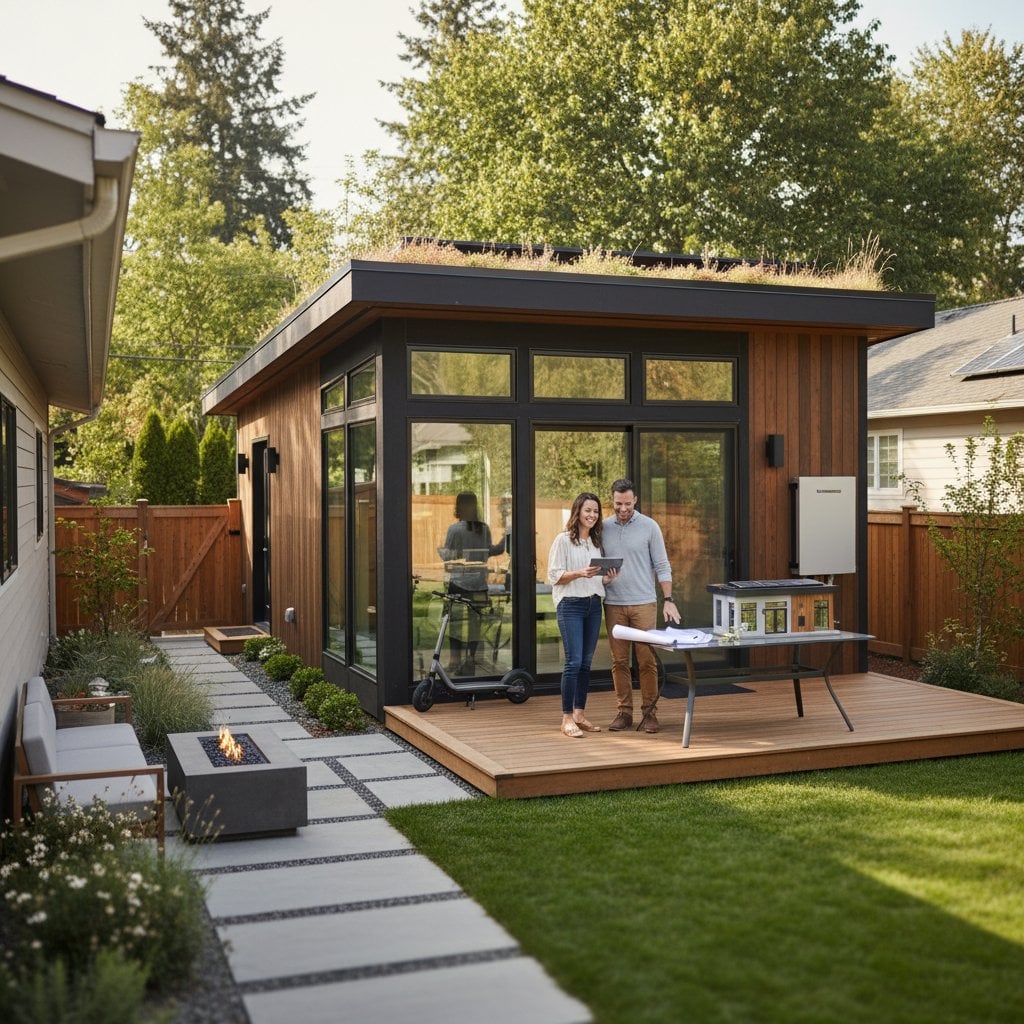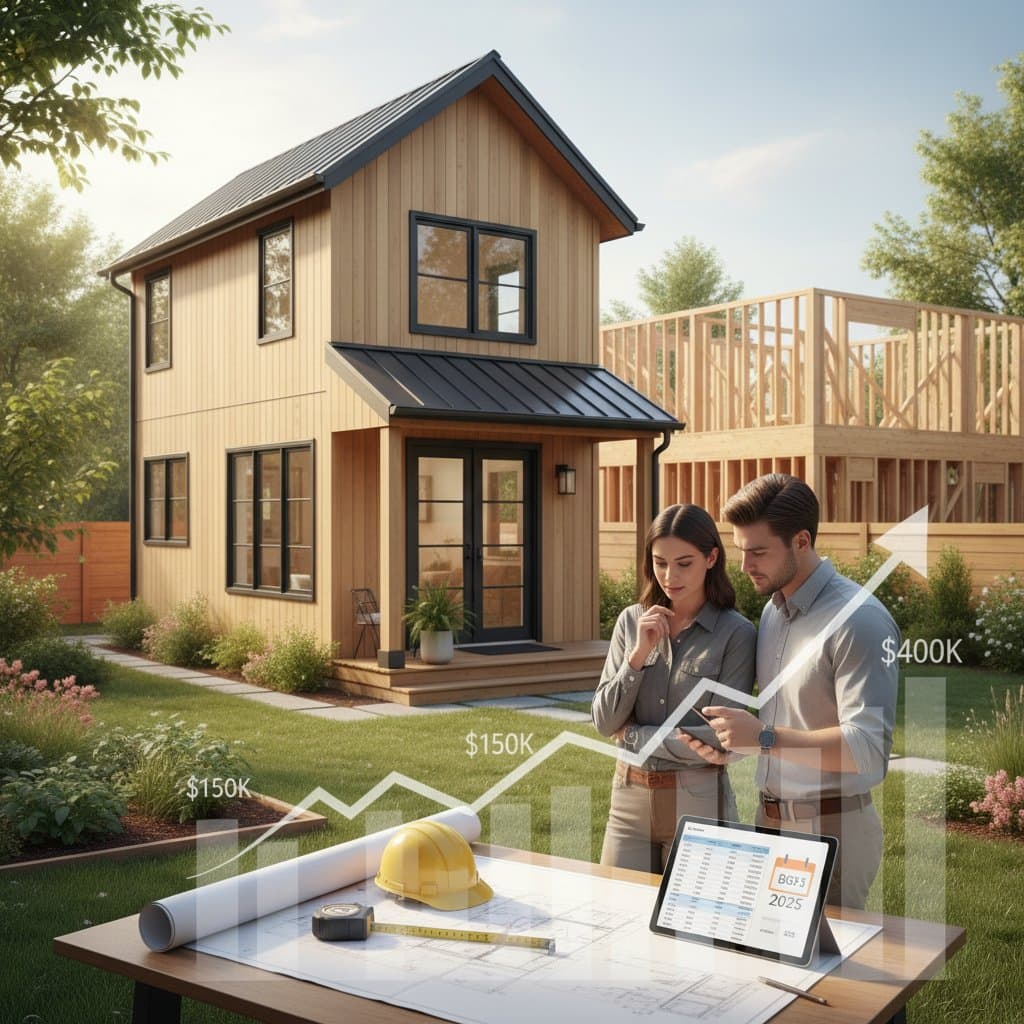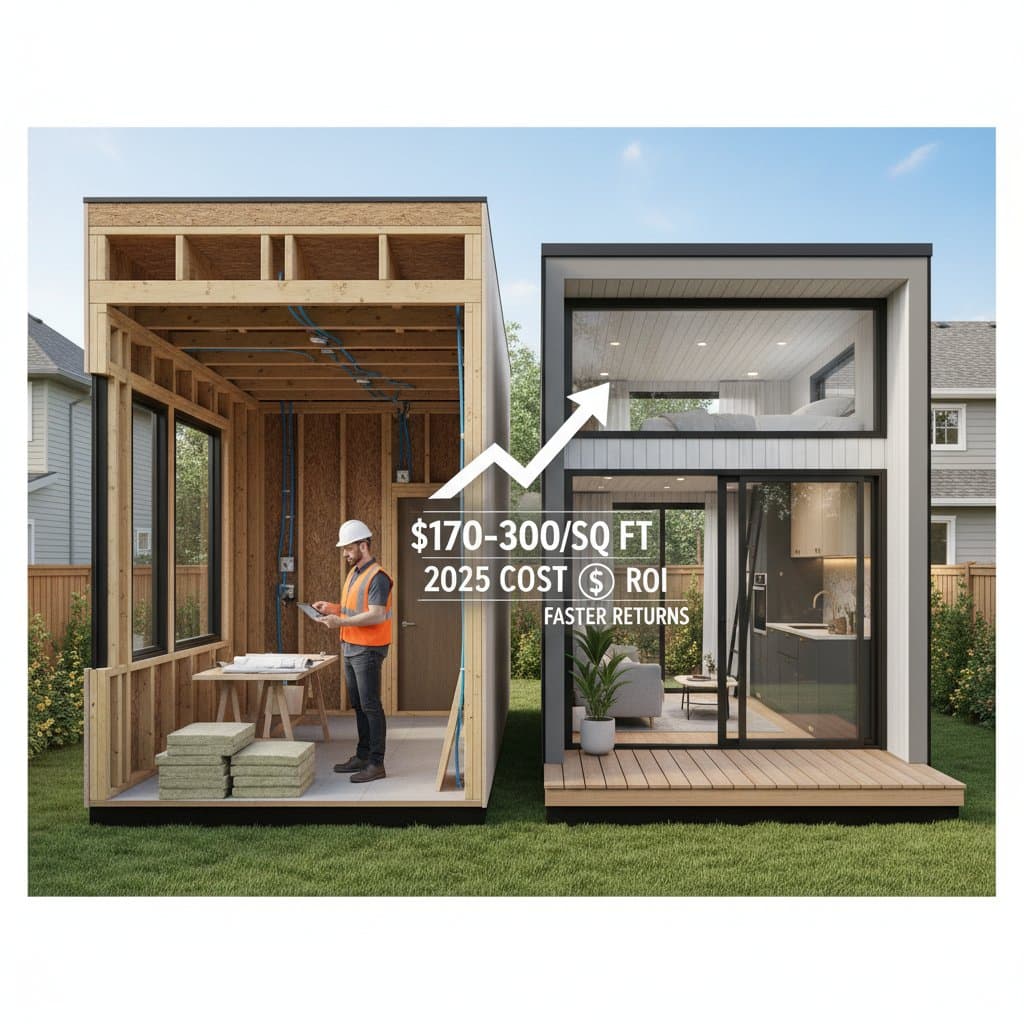2025 ADU Costs Uncovered: Budget for Your Granny Flat
Adding an accessory dwelling unit, often called an ADU or granny flat, expands living space, boosts property value, and provides flexible options for family members or rental income. This guide examines the factors that influence ADU construction costs, outlines steps to develop a realistic budget, and identifies opportunities to reduce expenses without compromising quality.
Homeowners who build a detached backyard cottage or convert an existing space in their home benefit from understanding financial details. Such knowledge supports informed decisions throughout the design and construction phases.
What Determines ADU Construction Costs
An ADU functions as a self-contained living space with a kitchen, bathroom, and sleeping area. Configurations include units attached to the main house, structures built above a garage, or standalone buildings in the yard. Each option impacts costs through differences in materials, labor, and site requirements.
The primary factors that shape expenses are as follows:
- Size and layout: Larger units demand more materials, labor, and infrastructure such as plumbing and electrical systems. A 400-square-foot ADU typically costs less per square foot than a 1,000-square-foot version due to economies of scale in shared elements.
- Foundation and site preparation: Excavation, grading, and ensuring proper access often reveal unexpected expenses, especially on uneven terrain.
- Material selections: Choices for finishes, roofing, windows, and siding range from basic to premium, with high-end options increasing costs by 20 to 50 percent.
- Permits and design fees: Compliance with local regulations can add 5 to 15 percent to the total budget, varying by jurisdiction.
- Utility connections: Extending water, sewer, and electricity lines may involve trenching or system upgrades, particularly for detached units.
- Labor availability: Rates for skilled tradespeople fluctuate with regional demand; in high-cost areas, labor alone can account for 40 to 60 percent of the project.
Homeowners who grasp these elements can evaluate contractor quotes effectively and focus on essential features.
Typical Price Ranges by ADU Type
Projects differ based on location and specifications, yet average cost brackets emerge for common construction types. These estimates assume standard materials and mid-range finishes in moderate-cost regions.
- Garage Conversion ADUs
- This approach proves most economical since the existing structure minimizes foundational work.
- Expenses concentrate on insulation, plumbing installations, and interior detailing.
- Such conversions suit compact units or guest accommodations, often ranging from $50,000 to $150,000.
- Attached ADUs
- These connect to the primary residence via a shared wall or hallway.
- Moderate costs arise from leveraging existing utilities and foundations.
- They fit multigenerational living arrangements, with totals typically between $100,000 and $250,000.
- Detached ADUs or Backyard Cottages
- Standalone designs mimic small independent homes.
- Elevated expenses stem from independent foundations, walls, and roofing.
- Privacy and rental potential justify the investment, with costs from $150,000 to $400,000.
- Above-Garage ADUs
- These necessitate structural reinforcements to support additional weight.
- Pricing falls midway between attached and detached options.
- They optimize space on constrained lots, generally costing $120,000 to $300,000.
Structural elements consume the largest budget share, followed by interior work and regulatory fees. Regional variations, such as higher material prices in urban areas, can adjust these figures by 20 to 30 percent.
Detailed Budget Breakdown
A structured budget allocates funds across distinct categories, enabling progress tracking and surprise mitigation.
Site Preparation and Foundation
Costs encompass excavation, grading for drainage, and concrete pouring. Properties with slopes or unstable soil require retaining walls or soil stabilization, potentially adding $10,000 to $30,000.
Framing, Roofing, and Siding
Wood framing dominates small residential projects for its affordability and ease. Roofing selections, from asphalt shingles to metal panels, affect durability; fiber cement siding offers longevity with minimal upkeep, though it costs 15 to 25 percent more than vinyl alternatives.
Windows and Doors
Opt for energy-efficient models to enhance insulation and reduce long-term energy bills. Standard sizes and shapes keep expenses down, while custom designs or expansive glass can double the allocation for this category.
Interior Finishes
Elements like flooring, cabinetry, tile work, and paint establish the unit's aesthetic. Mid-tier materials in high-traffic zones balance luxury and practicality, allowing premium touches in focal areas without exceeding budget limits.
Plumbing, Electrical, and HVAC Systems
These installations ensure safety and habitability. Upgrading an outdated electrical panel or installing a new sewer connection might elevate costs by $15,000 to $40,000, depending on site complexity.
Permits, Design, and Engineering
Requirements include architectural plans, engineering assessments, and inspection charges. Experienced builders streamline this process, often saving 10 percent through familiarity with local codes.
Design Decisions That Shape Expenses
Decisions made during design establish the project's financial framework. Proactive choices avert expensive revisions downstream.
- Opt for straightforward shapes: Rectangular designs reduce material waste and labor compared to irregular forms with multiple angles.
- Incorporate standard dimensions: Off-the-shelf windows and doors cut fabrication costs and installation time.
- Select simple roof profiles: Gable or shed styles simplify construction and maintenance over complex pitches.
- Prioritize efficient layouts: Compact plans with multifunctional spaces deliver comfort without unnecessary expansion.
- Emphasize durability: Investments in resilient materials like metal roofing or advanced insulation yield savings on repairs and utilities over time.
Strategies to Reduce Costs While Preserving Quality
Targeted approaches maintain high standards amid budget constraints.
- Leverage existing infrastructure: Transform a garage or basement to bypass foundational expenses entirely.
- Adopt open-concept plans: These designs enhance natural light and simplify framing, potentially trimming 10 to 15 percent from structural costs.
- Integrate prefabricated elements: Pre-assembled wall sections or modular units accelerate assembly and lower on-site labor by up to 20 percent.
- Handle select tasks personally: Activities such as painting, basic landscaping, or trim installation suit skilled homeowners, provided they adhere to code.
- Implement phased completions: Prioritize core systems first, deferring non-essential upgrades until funds permit.
Navigating Regional and Regulatory Influences
Zoning laws and permitting processes directly impact budgets. Certain locales impose impact fees for infrastructure strain or charges for utility integrations. Others provide rebates or expedited reviews for compact housing initiatives.
Confirm requirements for setbacks, parking, and maximum heights early. Sites with restricted access or established trees demand specialized equipment, extending timelines. Delays in approvals can disrupt labor schedules, inflating overall expenses.
Options for Financing an ADU
Multiple avenues facilitate project funding.
- Home equity loans draw on property value for competitive rates.
- Construction loans disburse capital incrementally, aligning with milestones.
- Cash-out refinancing consolidates debt while accessing equity.
- Personal savings or familial support suit modest conversions with lower overhead.
Consult a financial advisor to evaluate rates, terms, and tax implications tailored to your situation.
Engaging Professional Expertise
ADU projects demand coordination across trades, from framing to final inspections. Professionals handle permitting and compliance, minimizing risks. Specialists in plumbing, electrical, and structural work ensure adherence to standards.
A general contractor offers transparency through detailed bids, warranties, and oversight. For rental intentions, thorough documentation safeguards investments and tenant relations.
Maximizing the ADU's Role in Daily Life
Completion integrates the ADU seamlessly into property dynamics. Designs that promote comfort and seclusion suit family, guests, or renters alike. Strategic landscaping delineates private zones, while coordinated exteriors maintain visual harmony.
Routine upkeep, including roof inspections and surface cleaning, sustains value. Rental scenarios benefit from expense tracking for deductions. Efficient appliances and climate controls curb operational costs for all users.
Steps to Launch Your ADU Project
An ADU represents a significant commitment that enhances property worth when approached methodically. Begin by clarifying objectives, establishing a budget spectrum, and engaging builders versed in local regulations.
Preparation unlocks enduring advantages in lifestyle flexibility and financial returns. Your completed granny flat elevates both personal enjoyment and market appeal.










